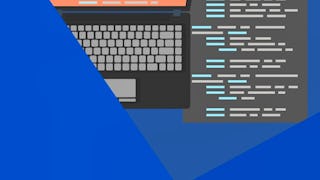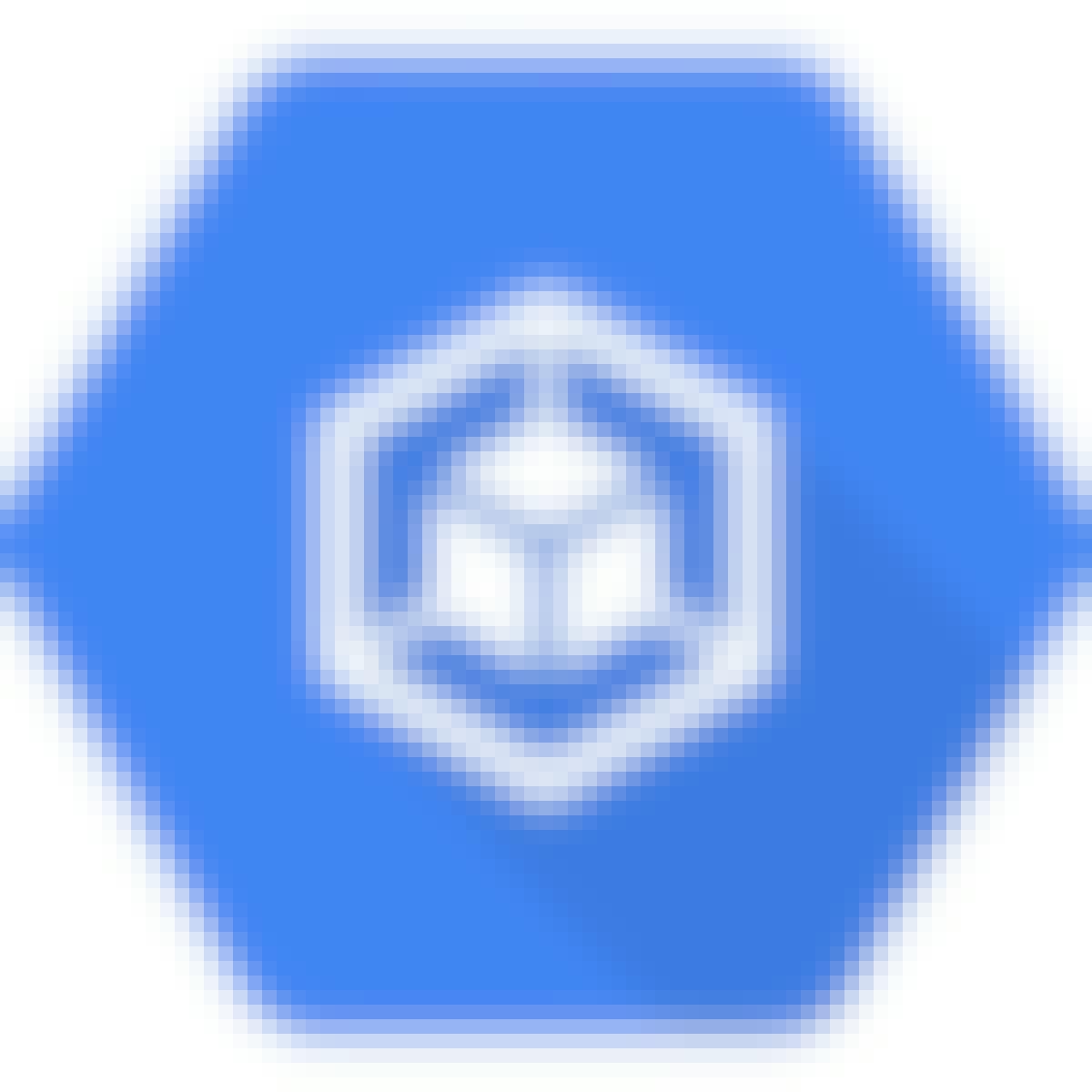- Browse
- Web Development
Results for "web development"
 Status: PreviewPreviewT
Status: PreviewPreviewTTecnológico de Monterrey
Skills you'll gain: Design Thinking, Change Management, Organizational Change, Innovation, Business Transformation, Forecasting, Strategic Thinking, Business Strategies, New Product Development, Value Propositions, Entrepreneurship, Trend Analysis
Build toward a degree
4.9·Rating, 4.9 out of 5 stars41 reviewsAdvanced · Course · 1 - 4 Weeks
 Status: Free TrialFree TrialS
Status: Free TrialFree TrialSScrimba
Skills you'll gain: Responsive Web Design, User Interface (UI) Design, Web Design, Maintainability, Typography, Cascading Style Sheets (CSS), Usability, User Experience Design, Hypertext Markup Language (HTML), Color Theory, Animations, Creativity
4.3·Rating, 4.3 out of 5 stars9 reviewsIntermediate · Course · 1 - 3 Months
 Status: PreviewPreviewN
Status: PreviewPreviewNNanjing University
Skills you'll gain: Operating Systems, Computer Systems, File Systems, OS Process Management, System Software, Software Systems, Computer Science, Software Design, System Design and Implementation, Data Storage, Computer Hardware, Virtualization, Algorithms, Human Computer Interaction
4.5·Rating, 4.5 out of 5 stars142 reviewsMixed · Course · 1 - 3 Months
 Status: Free TrialFree TrialA
Status: Free TrialFree TrialAArizona State University
Skills you'll gain: Semiconductors, Electronics Engineering, Computer Architecture, Hardware Architecture, Thermal Management, Scalability, Systems Integration, Manufacturing Processes, Technical Standard, Reliability
4.7·Rating, 4.7 out of 5 stars85 reviewsBeginner · Course · 1 - 3 Months
 Status: PreviewPreviewP
Status: PreviewPreviewPPontificia Universidad Católica de Chile
Skills you'll gain: Object Oriented Programming (OOP), Data Structures, Programming Principles, Algorithms, Program Development, Computational Thinking, Python Programming, Analysis
4.7·Rating, 4.7 out of 5 stars105 reviewsIntermediate · Course · 1 - 3 Months
 Status: Free TrialFree TrialU
Status: Free TrialFree TrialUUniversity of Virginia
Skills you'll gain: Brainstorming, Design Thinking, Ideation, Creative Thinking, Creative Problem-Solving, Innovation, Product Development, Product Design, Performance Measurement, Strategic Thinking, New Product Development, User Feedback, Product Improvement, Prioritization, Customer experience improvement, Stakeholder Engagement, Decision Making, Feasibility Studies, Collaboration, Risk Management
4.6·Rating, 4.6 out of 5 stars71 reviewsBeginner · Course · 1 - 3 Months
 Status: Free TrialFree Trial
Status: Free TrialFree TrialSkills you'll gain: OpenAI, Large Language Modeling, Generative AI, ChatGPT, Prompt Engineering, LLM Application, File Management, Application Programming Interface (API), Application Development, Artificial Intelligence and Machine Learning (AI/ML), Python Programming, Development Environment, Version Control
3.7·Rating, 3.7 out of 5 stars23 reviewsBeginner · Course · 1 - 4 Weeks
 Status: Free TrialFree TrialU
Status: Free TrialFree TrialUUniversity of Maryland, College Park
Skills you'll gain: Entrepreneurship, Innovation, Market Opportunities, Corporate Strategy, New Business Development, Value Propositions, Business Strategy, Competitive Analysis, Strategic Decision-Making, Market Analysis
4.4·Rating, 4.4 out of 5 stars93 reviewsBeginner · Course · 1 - 4 Weeks
 Status: Free TrialFree TrialG
Status: Free TrialFree TrialGGoogle Cloud
Skills you'll gain: No-Code Development, Cloud Applications, Application Design, Application Performance Management, Application Development, Authorization (Computing), Authentications, Application Lifecycle Management, Data Management, Restful API, Application Security, Scalability, Software Versioning, Automation, Data Integration, Debugging
4.7·Rating, 4.7 out of 5 stars22 reviewsIntermediate · Course · 1 - 3 Months
 Status: Free TrialFree Trial
Status: Free TrialFree TrialSkills you'll gain: Kubernetes, Google Cloud Platform, Containerization, Cloud Infrastructure, Cloud Applications, CI/CD, Generative AI, Cloud-Native Computing, Cloud Storage, Identity and Access Management, Infrastructure As A Service (IaaS), Prompt Engineering, Cloud Computing Architecture, Network Infrastructure, Virtual Machines, Cloud Computing, Scalability, Application Deployment, Continuous Integration, Data Storage
4.8·Rating, 4.8 out of 5 stars770 reviewsBeginner · Specialization · 3 - 6 Months
 Status: Free TrialFree Trial
Status: Free TrialFree TrialSkills you'll gain: Hardware Troubleshooting, Computer Networking, Network Protocols, Web Applications, Computer Security Awareness Training, Network Routers, Wireless Networks, Technical Support and Services, Encryption, Security Awareness, Computer Literacy, System Configuration, Microsoft Office, Authentications, Microsoft Windows, Peripheral Devices, Patch Management, Technical Support, Mac OS, Database Management
4.1·Rating, 4.1 out of 5 stars7 reviewsBeginner · Specialization · 1 - 3 Months

Skills you'll gain: MySQL, Java, Data Access, Database Application, Database Development, Java Programming, Databases, Software Development, Data Storage, Computer Programming
4.4·Rating, 4.4 out of 5 stars83 reviewsAdvanced · Guided Project · Less Than 2 Hours
Searches related to web development
In summary, here are 10 of our most popular web development courses
- Introducción a la Innovación Empresarial y Creación de Valor: Tecnológico de Monterrey
- Learn UI Design: Scrimba
- 计算机操作系统: Nanjing University
- Advanced Semiconductor Packaging: Arizona State University
- Programación en Python II: aprendiendo a estructurar datos: Pontificia Universidad Católica de Chile
- Design Thinking: Ideas to Action: University of Virginia
- Getting Started with Generative AI APIs: Codio
- Developing the Opportunity for Corporate Entrepreneurs: University of Maryland, College Park
- Building No-Code Apps with AppSheet: Implementation: Google Cloud
- Architecting with Google Kubernetes Engine en Portuguese: Google Cloud










